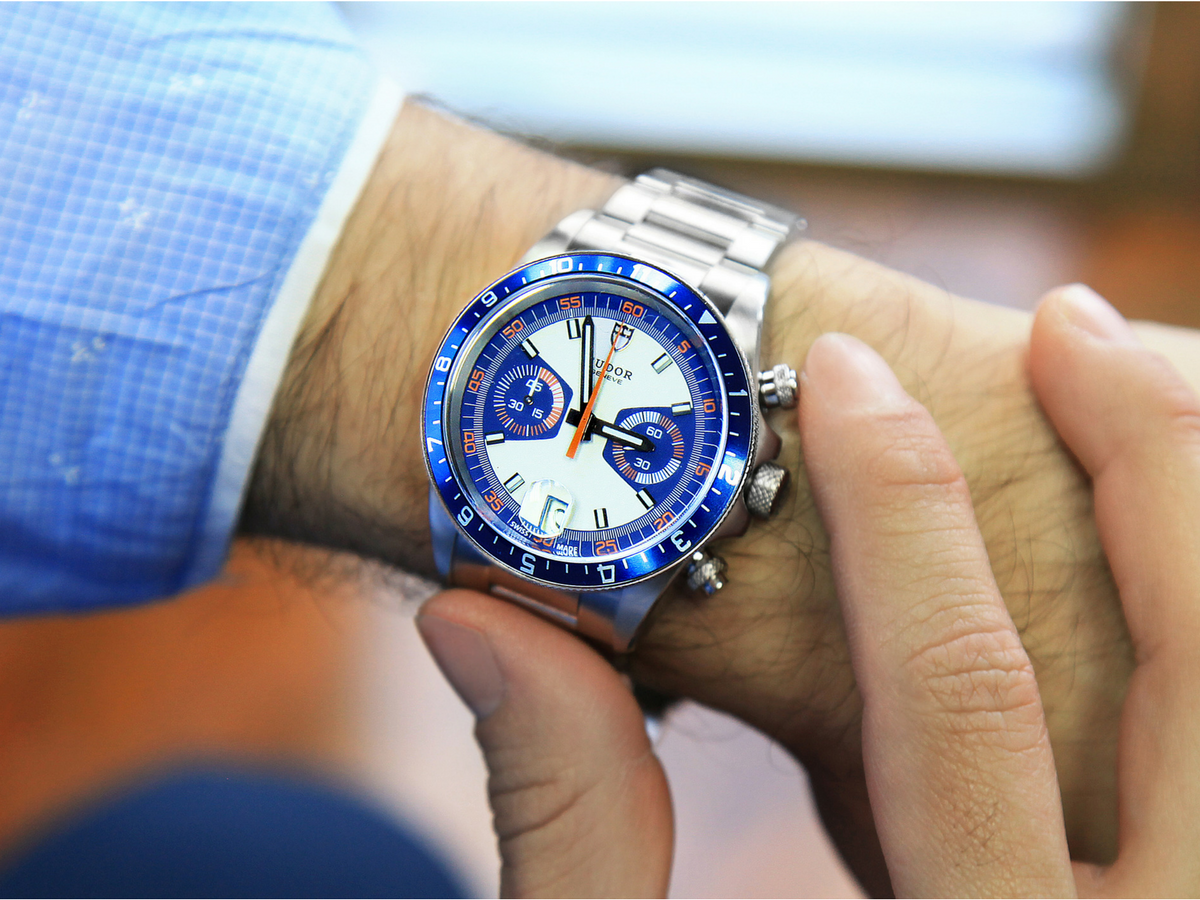Once you’ve finally chosen a wrist watch that suits your needs and budget, there’s one more important aspect to consider: your correct watch size. Just as learning to dress for your body shape and size is the key to looking good, the key to wearing a watch with confidence is choosing one that is proportionate to your wrist. There may be many differences among watches when it comes to style, price, and brand prestige, but the perfect watch is always one that fits well on you. Here’s a guide on how to find the perfect sizing for your timepiece: br br |
|
FIRST, MEASURE YOUR WRISTThis will help you establish where your wrist falls on a scale of small to large, and is very crucial if you are buying your watch online and cannot try it on for size. Get a tailor’s tape measure and measure around your wrist, above the bone, taking care that the tape is not too tight or too loose. In general, ladies’ or slender wrists are usually 6 inches or smaller, 6-7 inches are small to medium range, while 7.5 and above are large range. Now that you know your wrist size, below are some factors to consider. |
|
CASE DIAMETERThe case diameter is the measurement of the watch from the outer edge of the case, excluding the crown or pushers. How large you want the watch face to be really depends on preference, but here are general guidelines as to the proportional watch case for each wrist size: |
|
|
| WRIST SIZE | WATCH CASE SIZE | | Ladies / Vintage | 34mm or smaller | | < 6 inches | 34mm – 36mm | | 6 – 7 inches | 38mm – 42mm | | 7.5 – 8 inches | 44mm – 46mm | | > 8 inches | 48mm or bigger |
|
|
CASE THICKNESS
The case thickness is the height of the watch as it sits on your wrist. In general, the larger the case, the thicker it is. There are no hard and fast rules for case thickness, but do consider that a watch’s thickness can depend on its complications and what they are usually worn with. |
|
|
A dive watch, military, and chronograph watch, for example, will be thicker because they require more complex movements to power them. The extra space is there to accommodate their functionalities. These thicker watches may not fit under the cuff, unless your shirts are custom made; and for the same reason, slimmer watches are deemed more refined and better suited for formal occasions. |
STRAP WIDTH OR BRACELET WIDTHA well-proportioned watch usually has a band that is about half the diameter of its case. For instance, if you decide to buy a 42mm watch, the band’s width should be around 22mm. If you’re a fan of fat or extra-wide bands, you’ll usually have to purchase a watch with a larger case. |
|
|
The band’s material also affects how large the watch will look on your wrist. In general, a metal bracelet always feels and appears heavier than a leather strap or fabric band types. The strap also helps you achieve different looks – metal and leather straps as seen as more formal, while fabric or NATO straps are considered sportier.
|
WATCH DETAILS
Aside from the measurement of the watch and strap itself, the details of the watch – including markers, hands, subdials, pushers and crowns should also be taken into consideration. These details determine how prominent the watch will look on your wrist.
The type of watch also determines the available watch case sizes available. For example, a vintage watch will tend to measure around 31 to 36mm, as these sizes were customary decades ago. A sport watch will measure around 38 to 47 mm. Most popular sports watches – such as the likes of Rolex professional models – tend to play within the 39 to 41mm case size.
A unisex watch or his and hers watch will tend to measure around 36 to 40mm. These used to be the traditional size of a men’s watch, but more and more women are wearing a slightly oversized look nowadays. The average women’s watch size is 26 – 31mm, and while these are perfect for a dress watch, these may be too small if the wearer is going for a sporty look.
As such, for a small wrist, watches that have minimal features are best; while those with larger wrists can wear watches with more dominant features.
CERTAIN RULES WORTH FOLLOWING
The guidelines we’ve provided above are just that – guidelines, but there are certain rules worth following:The watch case shouldn’t go past the curve of your wrist. An extra-large watch may make a statement but if the lugs sit beyond your wrist, it will be difficult to wear comfortably, and you should opt for a smaller watch.The watch also shouldn’t leave marks on your wrist at the end of the day. This is a sign that you need better sizing and larger watch. A watch is a serious investment, so we always recommend holding, touching and trying it on for size before you make the purchase; or, if that is not possible, finding a dealer who is willing to show you how it looks on an actual wrist. So how do you know if you’ve chosen the right size for your watch? Your timepiece will look and feel as if it was made especially for you. |
|




